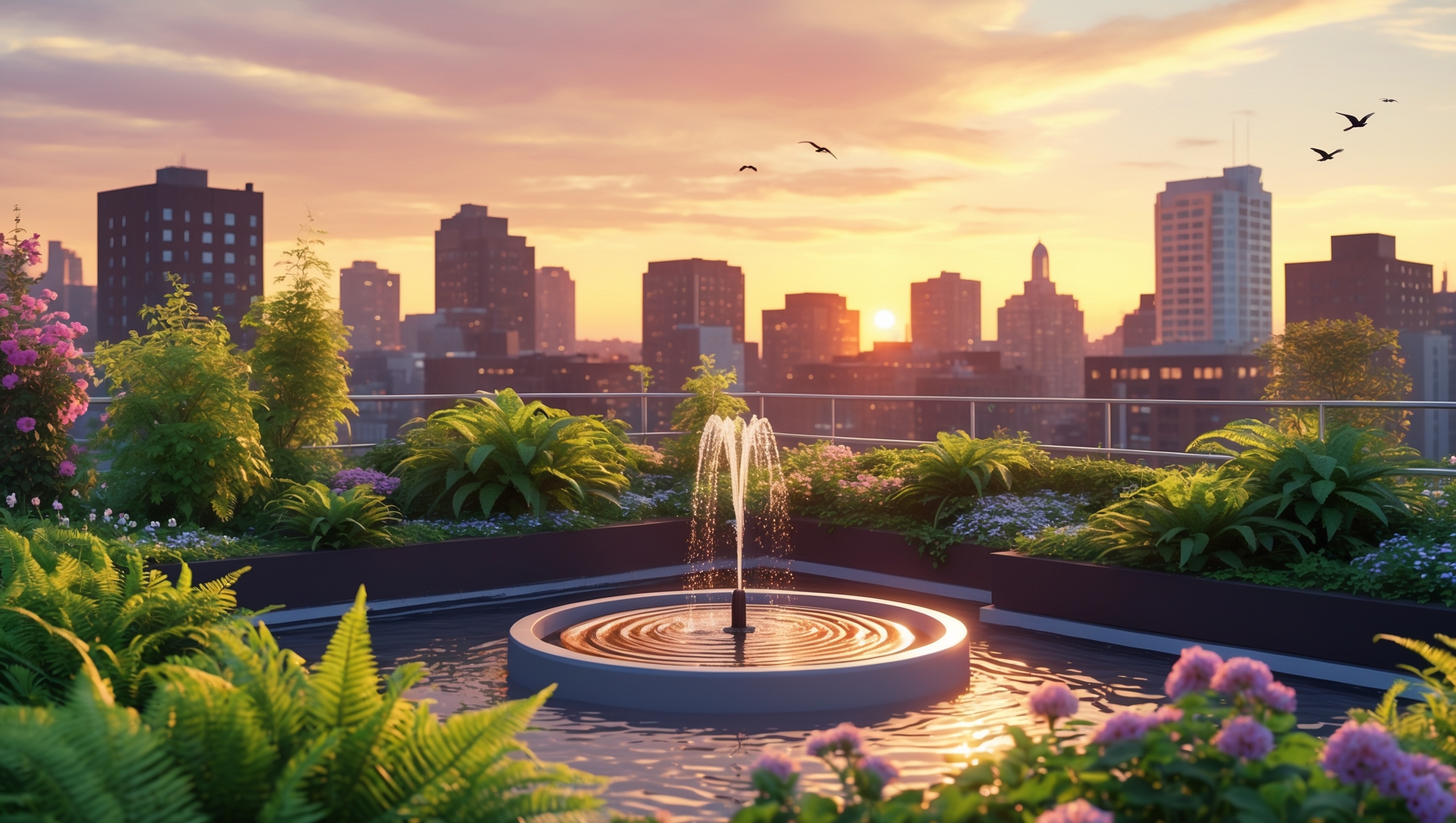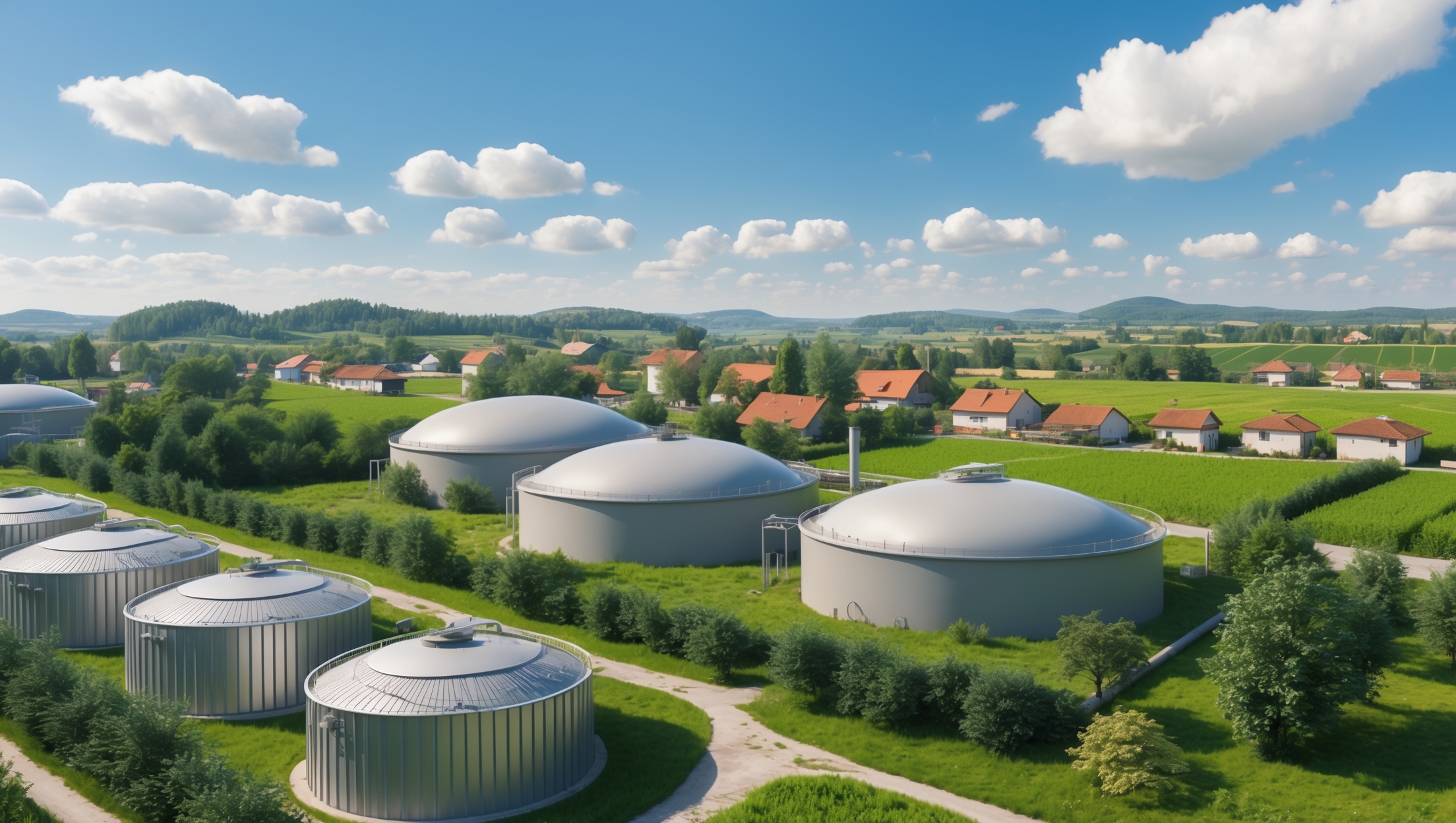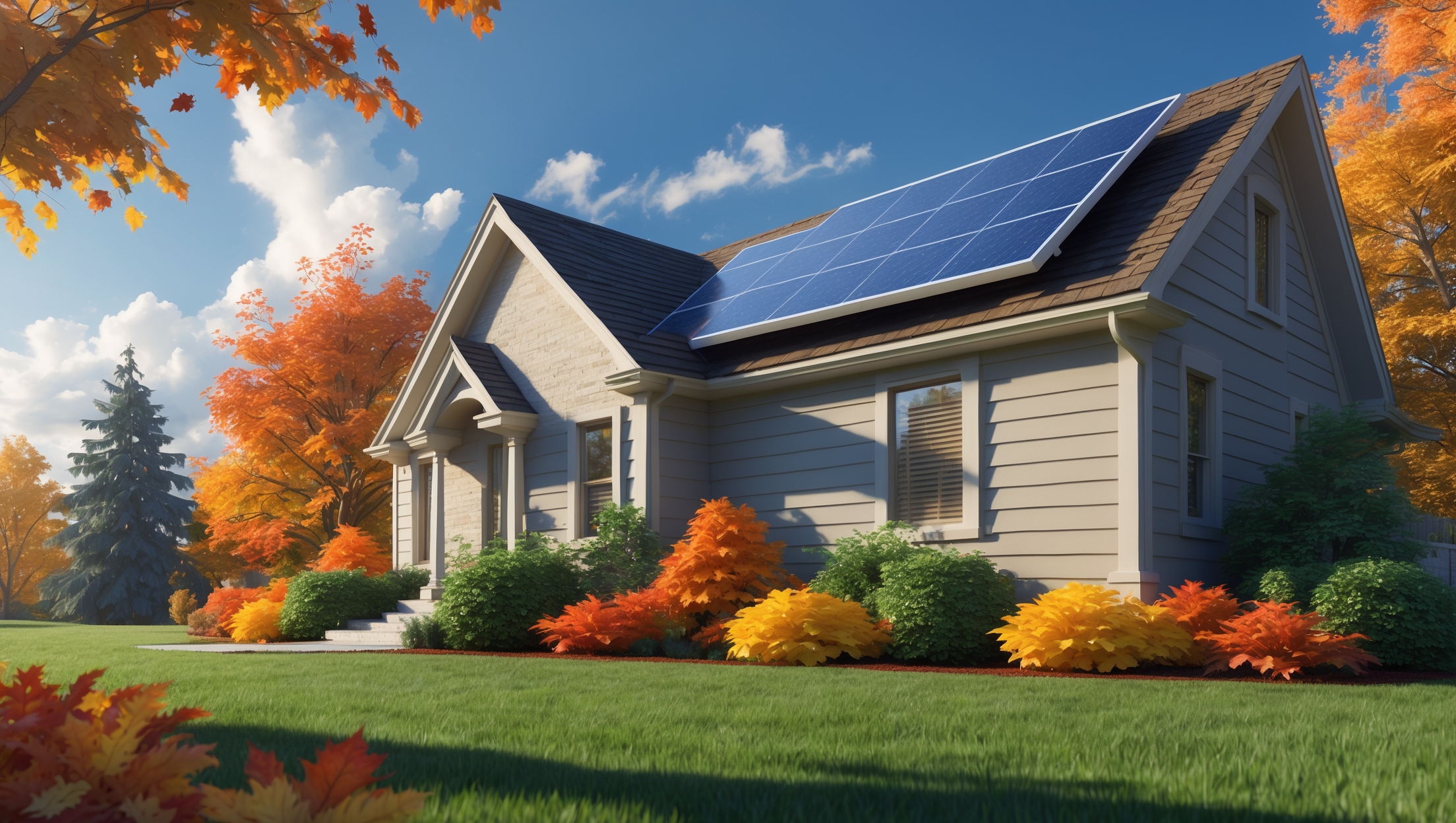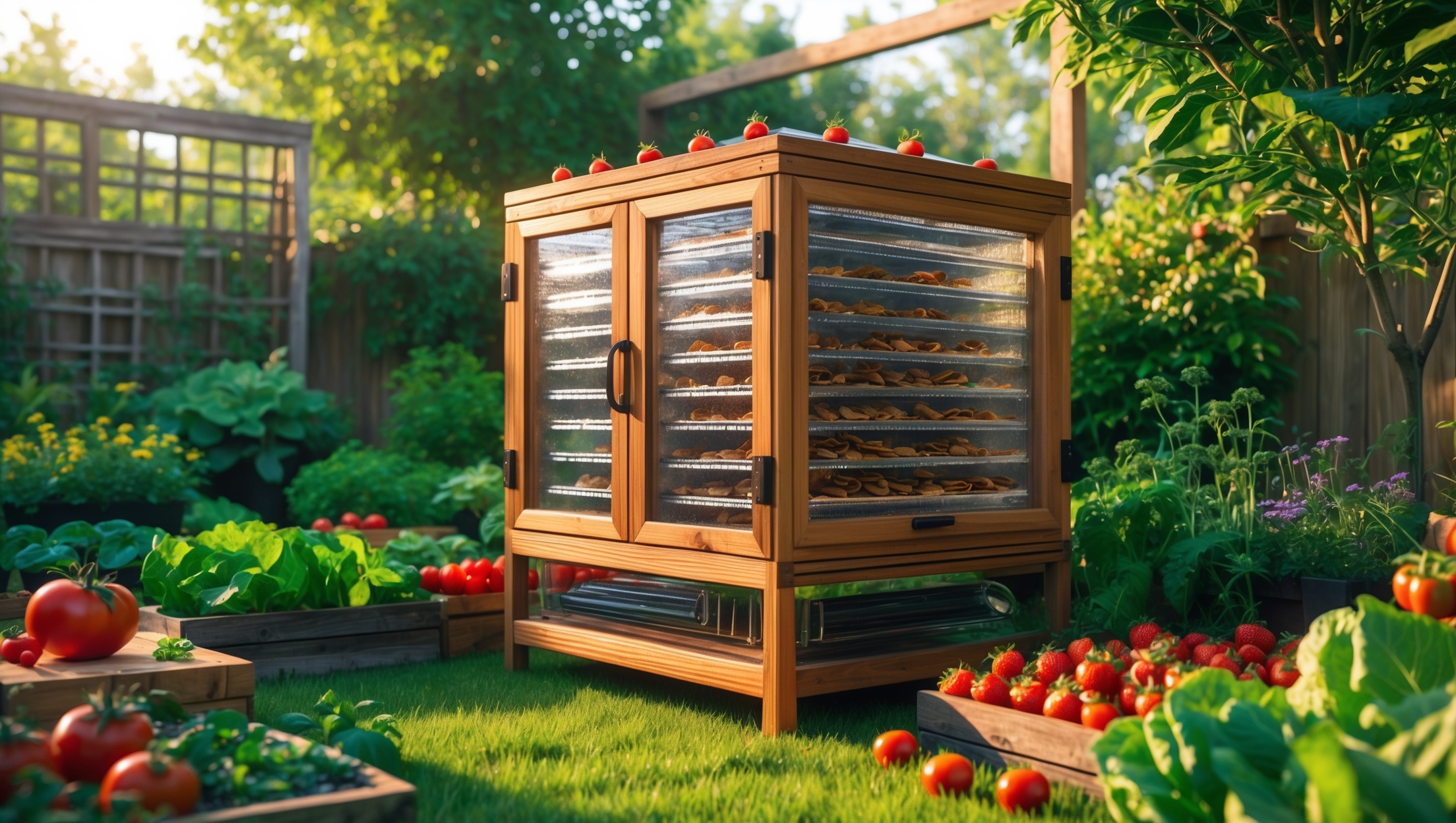Introduction
Sustainable living in urban environments often means making the most of limited space and resources. One increasingly popular way city dwellers blend green technology with aesthetic appeal is by installing solar-powered water features—whether on balconies, rooftops, or small backyard gardens. These features offer far more than visual tranquility: they cool microclimates, attract urban wildlife, and serve as living demonstrations of renewable energy in action. However, keeping your solar-powered water feature in top condition year-round requires attention to the unique challenges posed by city living—from air pollution and heatwaves to winter frost and unpredictable shade patterns from neighboring buildings. This comprehensive seasonal checklist will guide you through everything you need to know to maintain your urban solar-powered water feature for optimal efficiency, sustainability, and enjoyment all year long. Whether you’re a first-time installer or a seasoned city gardener, you’ll find actionable steps, expert tips, and practical solutions tailored specifically to city environments, helping you avoid common pitfalls and maximize the benefits of your eco-friendly oasis.
Spring: Reawakening Your Water Feature
Initial Inspection and Cleaning
As winter recedes, it’s time to bring your water feature back to life. Begin with a thorough inspection:
- Check for winter damage: Inspect the basin, pump, solar panels, and wiring. Look for cracks, leaks, or signs of frost damage—especially in ceramic or stone elements.
- Remove debris: Clear away leaves, twigs, and any litter that may have collected during the colder months. Urban areas are prone to windblown debris, so be meticulous.
- Clean the pump and filter: Disassemble the pump according to the manufacturer’s instructions. Rinse all components with clean water—never use harsh chemicals, as residues can harm both aquatic life and pump efficiency.
- Panel inspection: Gently wipe down the solar panel with a soft cloth and mild soap solution to remove soot, dust, or pollen buildup common in city air.
System Testing and Repairs
- Test the pump: Fill the basin and reconnect the pump. Make sure water flows smoothly and the solar panel powers up as expected.
- Assess water quality: Use a water testing kit to check for pH levels, algae presence, and contaminants—especially if your feature supports plants or fish.
- Seal and repair: Address any cracks with appropriate waterproof sealant. Replace worn tubing or connectors to prevent leaks.
Early Season Enhancements
- Introduce beneficial bacteria: These break down organic waste and keep water clear without chemicals.
- Replant and restock: If your feature includes aquatic plants or supports wildlife, now is the time to refresh them.
Summer: Peak Performance and Efficiency
Maximizing Solar Gain
Summer offers abundant sunlight, but urban features often face unique shading from buildings, trees, or air conditioning units. To ensure maximum solar gain:
- Monitor sunlight patterns: Track how sunlight moves across your space each day. Adjust panel tilt or location if possible to maximize direct sun exposure during peak hours (10am–4pm).
- Clean panels regularly: Urban dust, pollen, and even bird droppings can drastically reduce efficiency. Wipe the panels every 2-4 weeks with a damp microfiber cloth.
Water Management
- Check water levels daily: High temperatures increase evaporation, especially on rooftops. Top up with rainwater if available, or dechlorinated tap water to prevent mineral buildup.
- Prevent algae blooms: Install floating aquatic plants like water lettuce or lilies to shade the basin and compete with algae for nutrients. Use a solar-powered aerator for improved oxygenation.
- Inspect for mosquitoes: Moving water deters most mosquitoes, but stagnant spots can develop. Check for and eliminate any still water weekly.
Heatwave Precautions
- Monitor pump temperature: Excessive heat can stress pump motors. Shade the pump if possible or run it intermittently during extreme heat.
- Protect wildlife: If birds or pollinators visit your feature, ensure water is shallow at one edge for safe access and exit.
Fall: Preparing for Colder Weather
Leaf and Debris Management
- Install a net cover: Prevent falling leaves from clogging the pump and promoting decay with a simple mesh net over the feature.
- Increase cleaning frequency: Remove debris from the basin and pump filter weekly throughout the fall.
System Efficiency Checks
- Evaluate solar panel angles: The sun sits lower in the sky; adjust the tilt of your solar panel to capture more light.
- Check battery backups: If your system includes a battery, test its charge and capacity. Replace if showing signs of age or diminished performance.
End-of-Season Maintenance
- Remove sensitive plants: Transfer tropical or delicate aquatic plants indoors before the first frost.
- Inspect and insulate: Check all tubing and joints for leaks. Wrap exposed pipes with insulation to prevent freezing damage.
Winter: Protecting Your Investment
Winterizing the Water Feature
Urban winters can vary from mild to harsh. Your approach will depend on your climate and the specifics of your system:
- Drain and store: In freezing climates, completely drain the basin and pump. Disconnect and store the pump, filter, and any removable tubing indoors.
- Panel protection: Remove and store portable solar panels. For fixed panels, check mounts for stability and clear snow or ice as needed.
- Leave water for wildlife: If you keep a shallow basin for birds or pollinators, use a floating de-icer powered by your solar setup or battery backup to prevent freezing.
Off-Season Checks
- Inspect stored equipment: Check stored pumps and components monthly for moisture buildup or rodent damage. Clean as needed.
- Plan upgrades: Winter is a great time to research improvements—such as larger panels, smarter controllers, or more efficient pumps—for a spring relaunch.
Year-Round Urban Challenges and Solutions
Managing Urban Air Pollution
- Frequent cleaning: City air can carry soot, pollen, and fine particulates. Clean both solar panels and water surfaces more often than in rural areas.
- Water testing: Test water quarterly for heavy metals or chemical contamination, especially if you’re collecting rainwater in a city with high air pollution.
Noise and Vibration Management
- Soundproofing: Use rubber pads or foam insulation under the pump to minimize vibration transfer to balconies or shared walls.
- Pump selection: Choose a submersible pump rated for quiet operation—some are designed specifically for indoor or rooftop use.
Wildlife and Insect Control
- Beneficial insects: Encourage dragonflies or other natural predators to keep mosquito populations low.
- Pet safety: If you have pets, ensure they cannot access electrical wiring or drink untreated water from the feature.
Essential Tools and Supplies for Urban Maintenance
- Soft microfiber cloths for solar panels
- Non-toxic aquatic-safe cleaning brushes
- Rainwater collection containers
- pH and water quality test kit
- Mesh netting for leaf control
- Insulation tape or wraps for tubing
- Backup battery pack (if system supports it)
- Rubber pads for pump vibration control
- De-icer for winter wildlife water
Pro Tips for Sustainable Performance
- Monitor solar output: Use a basic wattmeter to track the panel’s output throughout the year. Sudden drops may indicate soiling or shading issues.
- Promote biodiversity: Choose native aquatic plants and provide stones or ramps for beneficial insects and birds.
- Smart automation: Consider a solar controller with programmable timers to optimize pump cycles for energy savings.
- Community collaboration: Join or start a local urban gardening group to share tips, tools, and troubleshooting advice.
Conclusion
Maintaining a solar-powered water feature in the city isn’t just a matter of aesthetics—it’s a statement in favor of sustainable urban living. By following a thoughtful, seasonally tailored maintenance routine, you ensure your feature remains a thriving part of your environment while maximizing its ecological and energy-saving benefits. From the first signs of spring through the challenges of winter, each season brings its own tasks and opportunities for improvement. Regular cleaning, careful monitoring, and a proactive approach to repairs will keep your system running efficiently and protect your investment for years to come.
Urban environments pose unique challenges, but they also offer unique rewards. Solar-powered water features can transform rooftops and balconies into green sanctuaries, attract wildlife, mitigate heat, and inspire neighbors to embrace renewable technologies. With the right seasonal care, your urban water feature will not only survive but flourish—demonstrating that sustainable living is possible even in the heart of the city. Whether you’re nurturing biodiversity, creating a relaxing retreat, or simply enjoying the gentle sound of running water powered by the sun, each small step contributes to a greener, more resilient urban landscape. So, embrace the rhythms of the seasons, and let your solar-powered water feature become a lasting symbol of sustainability and innovation in your city life.





Do you have recommendations for affordable urban-friendly tools or products to help with removing windblown debris, especially in tight backyard spaces where leaves and litter build up quickly?
For tight backyard spaces, a small handheld leaf blower or a cordless mini vacuum can be very effective for removing windblown debris around your solar water feature. Collapsible rakes and narrow scrub brushes work well for confined areas. Consider using a mesh skimmer net to quickly scoop leaves from the water, and a bucket or garden bag with handles to easily collect and transport debris.
You mention checking for frost damage on ceramic or stone parts in the spring. Is there a particular type of material that holds up best to winter weather in urban areas, or should I always plan to bring certain pieces inside during freezing months?
Ceramic and some types of stone can crack or chip due to freeze-thaw cycles, especially if water seeps into tiny cracks. Granite and certain dense stones are generally more resistant, while terracotta and porous ceramics are more vulnerable. If your water feature uses delicate or porous materials, it’s safest to bring those parts indoors before winter, even in urban areas. Durable materials like stainless steel or heavy granite usually withstand freezing temperatures better, but periodic inspection is still important.
As a small business with a rooftop patio, we get a lot of unpredictable shade from surrounding buildings. Does the checklist include any tips for optimizing solar panel placement or should we be looking at supplemental power sources for cloudy days?
The checklist does touch on solar panel placement, suggesting you position panels where they’ll receive the maximum sunlight throughout the day. Given your unpredictable shade, it would be wise to monitor sun patterns and adjust panel positioning if possible. For days with heavy shade or clouds, the article does recommend considering supplemental power options like battery backups or mains electricity to ensure your water feature runs reliably.
If my water feature’s pump didn’t start back up after winter, even though I cleaned everything as suggested, what would you recommend troubleshooting next before I consider replacing any parts?
If your pump isn’t starting after following cleaning steps, first check that the power supply is working and all connections are secure. Make sure the solar panel is clean and positioned to get maximum sunlight. Try gently tapping the pump in case debris is stuck inside. If your pump has a removable impeller, take it out and check for blockages. If none of these help, test the pump with a separate power source if possible to rule out electrical issues.
If my balcony receives inconsistent sunlight because of shifting shade from nearby buildings, are there specific solar panel models or configurations recommended to maximize water feature performance in dense urban settings?
In dense urban environments with shifting shade, look for solar panels labeled as ‘high efficiency’ or those using monocrystalline cells, which perform better in low-light conditions. Positioning the panel where it gets the longest hours of direct sunlight, even if not continuous, will help. Some water feature kits offer remote or extended cable solar panels, letting you place the panel away from the feature for maximum sun exposure.
You mention unpredictable shade patterns from neighboring buildings—are there any tips for positioning the solar panels to get the most sunlight throughout different seasons? I live in a city block surrounded by tall buildings, so maximizing sunlight is always tricky.
In dense urban areas with tall buildings, try placing your solar panels on rooftops or higher balconies where they’re less likely to be shaded. If possible, use adjustable mounts to tilt the panels seasonally—steeper in winter and flatter in summer. Observing sunlight at different times of day can help you find the spot that gets the longest exposure despite shifting shadows.
When you mention checking for winter damage on the pump, are there particular signs you would look for in pumps that have been exposed to urban salt or de-icing chemicals? I’ve had pumps seize up before and wonder if that’s a common issue in city environments.
Exposure to urban salt or de-icing chemicals can definitely affect pumps. Look for signs like corrosion on metal parts, residue buildup, stiff or noisy movement, and seals or gaskets that appear cracked or worn. Seizing can happen if salt gets into moving parts or causes rust. Rinsing the pump with fresh water and inspecting for early signs of wear each spring can help extend its life.
I’m on a pretty tight budget and I’m planning my first installation. Could you give some advice on which parts of the water feature are most prone to damage so I know where not to cut corners?
When budgeting for your solar-powered water feature, prioritize quality for the solar panel, water pump, and any waterproof electrical connections. These are the components most vulnerable to wear, weather, and debris. Cheaper versions may fail quickly or be inefficient. Reservoir liners and seals are also important, as leaks can be costly to fix. You can save on decorative elements, but core functional parts should be sturdy and weather-resistant.
As a parent, I have limited time for maintenance. About how much time each season should I expect to spend on upkeep for a small solar-powered fountain on our apartment balcony?
For a small solar-powered fountain on your apartment balcony, you can usually expect to spend about 30–45 minutes per season on maintenance. This includes cleaning the pump and panels, checking water levels, and removing debris. Regular quick checks every couple of weeks take just a few minutes, but the main seasonal upkeep is minimal and should fit well into a busy schedule.
Once the initial spring cleaning is done, how often should routine maintenance like debris removal or pump checks be done throughout the urban summer, especially in places with frequent heatwaves?
After your spring cleaning, it’s best to check and remove debris from your urban water feature at least once a week during the summer, especially during periods of frequent heatwaves. Heat can speed up algae growth and clog pumps, so also inspect the pump weekly to ensure it’s running smoothly. In particularly hot or windy areas, you might need to check even more often to keep everything clean and efficient.
Could you elaborate on the best way to winterize ceramic or stone water features to prevent frost damage, as you mentioned checking for cracks during spring inspections?
To winterize ceramic or stone water features, start by draining all the water to prevent freezing and expansion that can cause cracks. Clean the surfaces thoroughly and let them dry completely. Remove any pumps or solar equipment and store them indoors. If possible, cover the feature with a breathable, weatherproof cover to shield it from moisture and frost. These steps help protect against winter damage so you’ll have fewer issues to address during spring inspections.
After reopening my water feature in spring, I sometimes notice reduced water flow even after cleaning the pump. What troubleshooting steps do you suggest for resolving low pump performance in urban environments?
After spring reopening, low water flow can have several causes even if the pump is clean. First, check for blockages in tubing or connectors—urban dust and debris often accumulate there. Confirm the pump’s impeller is spinning freely and not worn out. Also, inspect the solar panel for dirt or shading, as reduced sunlight impacts performance. Make sure water levels are adequate, since low levels can cause airlocks. If all these areas seem fine, test the pump on a sunny day to rule out power issues.
Are there any budget-friendly methods for safeguarding outdoor solar panels in city areas with lots of windblown debris, especially during the early spring cleanup you recommend?
Absolutely, there are several cost-effective ways to protect your solar panels from windblown debris during early spring. You can set up simple mesh or plastic guards around the panels to block larger debris, and regularly brush off leaves and twigs with a soft broom. Positioning panels slightly above ground level can also minimize buildup. These measures help keep maintenance affordable and effective.
Could you go into more detail on how to manage unpredictable shade patterns from neighboring buildings when positioning solar panels for these water features? It seems like this would be a common issue in dense urban areas.
Managing unpredictable shade from nearby buildings is indeed a common challenge. To address this, start by observing the site at different times of day and throughout the year to identify the sunniest spots. Adjustable mounting systems allow you to reposition panels as needed. You might also consider using micro-inverters or optimizers, which help panels perform better when some are shaded. For heavily shaded settings, supplementing with a battery system or connecting to the grid can keep the water feature running smoothly during periods of low sunlight.
You mention not using harsh chemicals when cleaning the pump and filter. What are the safest cleaning methods or products I can use if my water feature gets a lot of city grime or bird droppings?
For cleaning pumps and filters without harsh chemicals, you can use a soft brush or sponge along with warm water to remove grime and bird droppings. A mild, biodegradable soap is also safe for most water features—just be sure to rinse thoroughly so no residue remains. For stubborn deposits, a mixture of white vinegar and water works well and is environmentally friendly.
You emphasized checking for frost damage, especially in stone or ceramic elements. I’m on a student budget—are there any affordable ways to protect these parts from cracking during harsh winters, or is it usually unavoidable?
You can definitely protect stone or ceramic parts without spending a lot. Try wrapping them with old blankets or towels secured with plastic sheeting to keep out moisture. If possible, drain and remove smaller features to store indoors. Even just elevating your feature slightly to avoid direct ground contact can help reduce cracking risk.